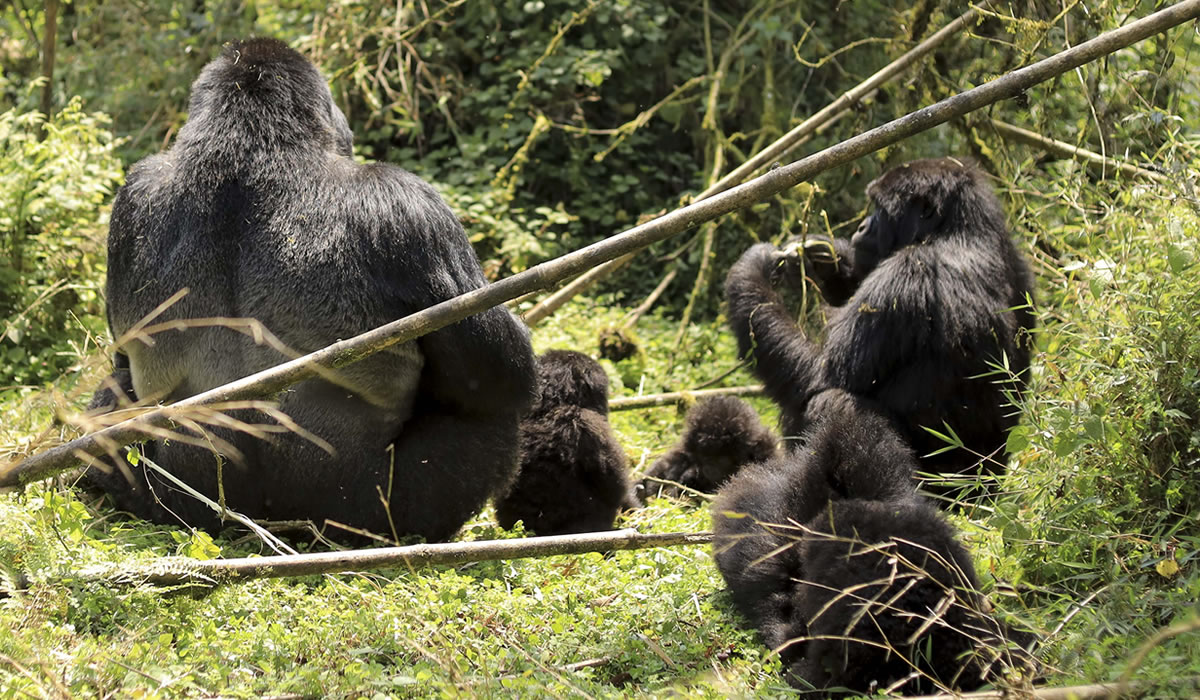Rwanda is globally renowned for its exceptional mountain gorilla trekking experiences. Located in the heart of East Africa, Rwanda’s Volcanoes National Park (Parc National des Volcans) is home to a significant population of endangered mountain gorillas, making it one of the few places on Earth where tourists can observe these majestic primates in their natural habitat. Gorilla trekking in Rwanda is more than a simple hike it’s a transformative, once-in-a-lifetime adventure that connects humans with one of our closest animal relatives in an unforgettable way.
However, to ensure the sustainability of this extraordinary activity, strict rules and guidelines govern gorilla trekking in Rwanda. These rules are designed not only to protect the mountain gorillas, who share more than 98% of our DNA, but also to ensure the safety and wellbeing of the tourists and park staff involved. This article provides a detailed overview of Rwanda’s gorilla trekking rules, practical guidelines, ethical considerations, and expert tips for a safe and rewarding experience.

Why Are Rules Important in Gorilla Trekking?
Mountain gorillas are critically endangered, with just over 1,000 individuals remaining globally. These great apes live in tightly knit family groups led by dominant silverback males and are highly sensitive to human presence. Because of their genetic similarity to humans, they are particularly vulnerable to human diseases, including common colds, flu, and COVID-19.
Rwanda has implemented a rigorous conservation framework, with support from the Rwanda Development Board (RDB), conservation NGOs, and local communities. These rules and guidelines have been instrumental in increasing gorilla populations in the Virunga Massif and ensuring responsible tourism that does not disrupt the gorillas’ natural behaviors.
Gorilla Trekking Permits in Rwanda
Before delving into the rules on the ground, it is essential to understand how the permit system works:
- Permit Requirement: Every visitor must obtain a gorilla trekking permit issued by the Rwanda Development Board (RDB). Without a permit, you cannot participate in the trek.
- Cost: As of 2024, a gorilla trekking permit in Rwanda costs $1,500 per person for international visitors. Discounts apply for East African citizens and residents, as well as for tourists spending extended time in the country.
- Inclusions: The permit includes park entry, ranger and guide services, one hour of gorilla viewing, and conservation fees.
- Booking: Permits can be booked through the RDB website, authorized tour operators, or through travel agencies.
Because only a limited number of tourists are allowed to visit each gorilla family per day, it is advisable to book permits several months in advance, especially during the dry season (June to September and December to February).
Pre-Trek Guidelines and Briefing
Every trek begins at the Kinigi Park Headquarters, where visitors gather early in the morning for a mandatory briefing session. During this time, rangers and guides explain the trekking rules, assign visitors to gorilla families based on physical fitness and preferences, and organize transport to the trailheads.
Key points covered during the pre-trek briefing include:
- Group Size Limit: Only eight visitors per day are allowed to visit a specific gorilla group. This minimizes stress on the animals and reduces the risk of disease transmission.
- Age Limit: The minimum age for gorilla trekking in Rwanda is 15 years.
- Health Screening: Visitors showing signs of communicable illnesses such as coughing, sneezing, or fever may be denied participation to protect the gorillas.
- Physical Readiness: Treks can last from 1 to 6 hours or more depending on the location of the gorilla family. Visitors are advised to disclose any health conditions and to choose an appropriate trekking level.
Rules During the Gorilla Trek
Once the trek begins, strict behavior protocols must be observed. Rangers lead every group, accompanied by trackers who locate the gorilla families early each morning.
- Maintain a Safe Distance
- Visitors must stay at least 7 meters (about 23 feet) away from the gorillas. While gorillas may approach out of curiosity, it is essential that humans do not move closer.
- This rule helps reduce the risk of transmitting diseases and ensures the animals feel unthreatened.
- No Flash Photography
- Only non-flash photography is allowed. Flashlights can startle gorillas and provoke aggressive behavior.
- Ensure your camera settings are adjusted before encountering the gorillas to avoid disruptions.
- Keep Voices Low
- Speak quietly throughout the trek, especially when near the gorillas. Loud voices may alarm or disturb them.
- Screaming, shouting, or excessive noise is prohibited.
- No Eating, Drinking, or Smoking
- Do not eat, drink, or smoke while near the gorillas. Food can attract them or cause health issues if ingested.
- Littering in the park is strictly forbidden.
- One Hour Viewing Limit
- Visitors are allowed to spend a maximum of one hour with the gorilla family once they are located.
- This time limit helps minimize stress on the gorillas and maintains their natural rhythms.
- Stay in a Group
- Always remain with your assigned group and follow the guide’s instructions. Wandering off is dangerous and could disrupt gorilla activity or expose you to wild animals.
- No Physical Contact
- Gorillas are wild animals and must not be touched under any circumstances.
- Even though habituated, they are still unpredictable and potentially dangerous if provoked.
- Avoid Eye Contact
- While it’s tempting to make eye contact, prolonged direct stares may be interpreted as a threat by gorillas, especially silverbacks.
What to Wear and Bring for Gorilla Trekking
Being well-prepared enhances both comfort and safety. Rwanda’s volcano terrain is rugged, muddy, and often misty due to its high altitude.
Recommended Gear Includes:
- Hiking boots with good ankle support
- Long-sleeved shirts and trousers to protect against nettles, thorns, and insects
- Waterproof jacket or poncho, especially during the rainy season
- Gardening gloves for gripping vegetation
- Daypack with water (at least 2 liters), snacks, and a first aid kit
- Hat and sunscreen for sun protection
- Walking stick (provided at the trailhead or by porters)
- Insect repellent to guard against tsetse flies and mosquitoes
- Camera with zoom lens and no flash
Hiring a porter is also highly recommended. Not only do they assist with carrying bags, but they also help navigate slippery terrain and provide employment to local communities.
Health and Safety Protocols
Since gorillas are susceptible to many human diseases, the Rwandan authorities enforce strict biosecurity and hygiene measures:
- Face masks may be required, especially since the COVID-19 pandemic.
- Hand sanitization is mandatory before the gorilla encounter.
- Visitors with contagious illnesses are advised to voluntarily cancel their trek—permits may be deferred depending on the circumstances.
Medical emergencies are rare but taken seriously. Rangers carry radios and first aid kits. In more remote areas, evacuation procedures are in place with support from emergency response units.
Ethical and Conservation Considerations
Responsible tourism in Rwanda goes beyond following rules, it involves supporting the long-term conservation of mountain gorillas and the wellbeing of local communities.
- Revenue Sharing: A portion of the permit fees is invested into local community projects, including schools, healthcare, and infrastructure. This encourages coexistence between people and wildlife.
- Community Involvement: Many porters, guides, and staff come from surrounding villages, providing employment and reducing poaching incentives.
- Habituation Programs: Only habituated gorilla families those used to human presence are visited by tourists. These groups are monitored daily to ensure they are coping well with tourism.
By choosing to trek in Rwanda, visitors contribute to the success of conservation initiatives that have helped grow the global gorilla population.
Best Time to Trek Gorillas in Rwanda
Gorilla trekking in Rwanda is a year-round activity, but certain months offer better conditions:
- Dry Season (June to September and December to February): Trails are less muddy, and visibility is generally better. These are also the busiest months, so early bookings are essential.
- Wet Season (March to May and October to November): Fewer tourists, greener landscapes, and discounted accommodation, but expect slippery trails and heavier rains.
Regardless of the season, gorillas can be found throughout the year.
Gorilla trekking in Rwanda is a profound and humbling experience that offers rare insight into the lives of one of our closest relatives. However, it also comes with the responsibility of protecting a fragile species and its ecosystem. By adhering to Rwanda’s gorilla trekking rules and guidelines, visitors not only ensure their own safety but also actively contribute to the conservation of mountain gorillas for future generations.
From acquiring permits and respecting distance protocols to wearing the right gear and supporting local communities, every step matters. Rwanda has set a global benchmark in sustainable gorilla tourism and every trekker plays a vital role in upholding it.
In the words of the late primatologist Dian Fossey, “When you realize the value of all life, you dwell less on what is past and concentrate more on the preservation of the future.” Trekking with Rwanda’s mountain gorillas isn’t just about adventure, it’s about becoming a guardian of that future.

